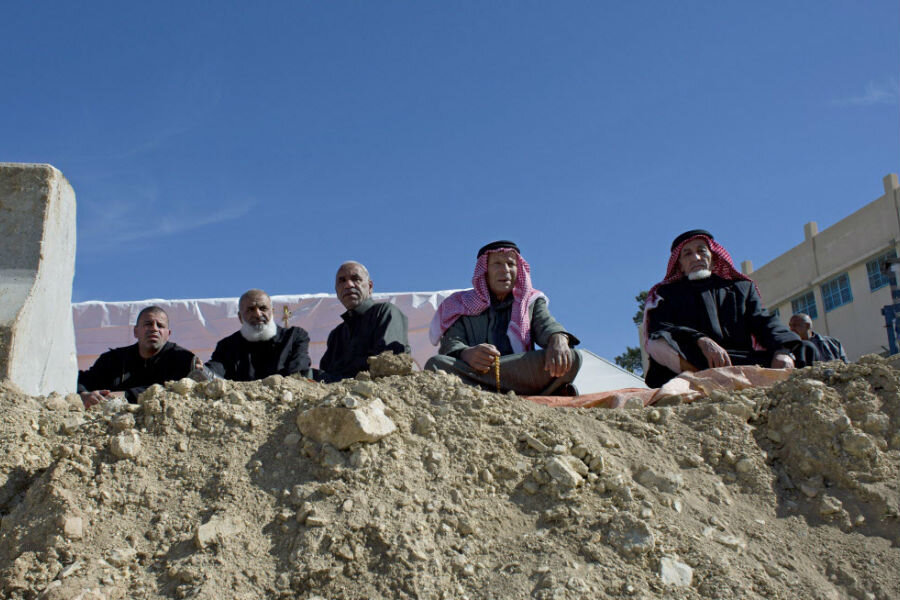Islamic State burning of Jordanian pilot: A page from Hussein, Assad regimes?
Loading...
| Washington
The execution-by-burning of Jordanian pilot Moaz al-Kasasbeh by Islamic State terrorists has prompted widespread observations that the group has descended to new levels of depravity.
Yet while the public display through Internet videos of the cruel acts the terrorist group is employing may be new, the acts themselves, it appears, are not.
The inhumane methods appear to come largely from the prisons and torture chambers of deposed Iraqi leader Saddam Hussein and Syrian President Bashar al-Assad.
Saddam Hussein ruled through fear, making sure Iraqis knew just enough about the vicious methods of torture and execution he used against anyone who dared challenge him.
Today, some of the top army commanders and Iraqi Mukhabarat or intelligence officials who enforced that system are now in the top rungs of the Islamic State (IS) leadership.
Syria’s Mr. Assad, like his father before him, has used torture against the regime’s domestic enemies for decades as a means of building fear and maintaining control. But a number of former IS fighters (and one-time captives in Assad’s notorious prisons) who have defected from IS over its extreme violence report that the same methods of torture and execution they saw employed by the Assad regime – including burning prisoners alive – are now being used by IS.
In the aftermath of Lt. Kasasbeh’s immolation, some officials and counterterrorism experts insisted the inhumanity of the public murder suggested the group had gone too far and would begin to lose whatever public support it enjoys. At least one expert says it also may signal that the group is beginning to rot from within. A key difference with this atrocity, experts say, is that it is not another beheading of a Westerner, or mass execution of minority Christians, or enslavement of women, but a murder of a Sunni Muslim presumably by other Sunni Muslims. The Islamic State hasn’t hesitated to kill Muslims before now, but the group has justified their mass executions and beheadings by saying their victims were from other sects.
Kasasbeh, his orange jumpsuit drenched in a flammable liquid before he was placed in a cage to be set afire, was “a devout Muslim, one of eight children, just months into married life, with the hopes of his own family in front of him,” said Secretary of State John Kerry, to underscore why he thought this murder would tip even more Muslims to revulsion of IS.
The terrorist group “places no value on life, including that of fellow Muslims,” Kerry said.
Noting that IS is “primarily engaged in the wanton killing of fellow Muslims,” Matthew Levitt, director of counterterrorism and intelligence at the Washington Institute, says Kasasbeh’s murder “may turn [the] tide” of support for the group from outside donors and foreign fighters.
On Wednesday, Jordan’s King Abdullah said in a statement that Kasasbeh died defending his “faith, country and nation,” while IS is at war against “noble Islam.”
But the long reigns of terror of Hussein and Assad, during which these acts of torture were perfected – and used primarily against other Muslims – may suggest that IS has some period of its own reign of terror before it.
Where Mr. Levitt may be right is in his prediction that IS may have crossed the threshold of “the beginning of the end” with an atrocity committed against a fellow Muslim that will place a spotlight on IS as, more than anything else, an oppressor and executioner of other Muslims.
Kasasbeh’s public execution was so horrendous, Levitt says, that it may indeed suggest the group is “beginning to decay from within” and will do itself in. He says reports out of IS-held territory increasingly chronicle the disenchantment of local populations suffering growing abuse at the hands of IS militants, while evidence is also mounting of foreign fighters refusing to go into battle – and in some cases being executed as a result.
While readily employing the methods used by Hussein and Assad before it, IS may now have gone too far in displaying for the world instruments of fear that other practitioners kept behind closed doors.








